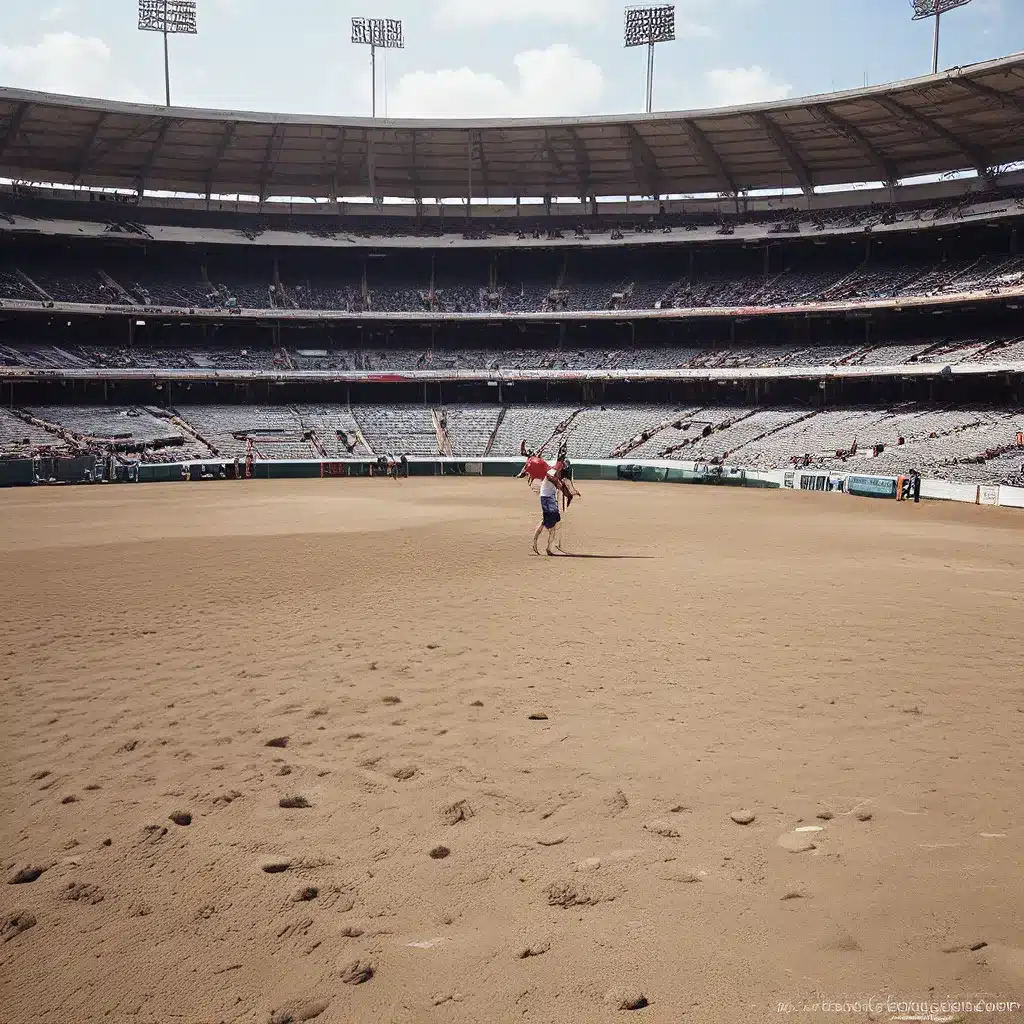
The Estadio Quisqueya, nestled in the heart of Santo Domingo, the Dominican Republic, holds a rich and captivating history that is intricately woven into the fabric of the nation’s beloved pastime – baseball. This iconic stadium, dating back to 1955, has witnessed the rise and fall of countless baseball legends, the passionate roar of devoted fans, and the timeless traditions that make Dominican winter league baseball such a cherished cultural phenomenon.
A Legendary Home for Dominican Baseball
The Estadio Quisqueya is the home ground of two of the most storied baseball clubs in the Dominican Republic: the Tigres del Licey and the Leones del Escogido. These two teams, which have a fierce rivalry, have been the dominant forces in the country’s winter league, with the Licey boasting an impressive 22 championship titles and 10 Caribbean Series victories.
The stadium is named after the Quisqueya, the indigenous name for the island of Hispaniola, which is shared by the Dominican Republic and Haiti. It was built in 1955 and has undergone several renovations over the years to maintain its status as one of the premier baseball venues in the country.
The stadium’s capacity of 15,000 is often pushed to its limits during the intense Dominican Winter League playoffs, where the passionate fans create an electric atmosphere that is unmatched in the sport. The roar of the crowd, the rhythmic chanting, and the infectious energy of the fans are all integral parts of the Estadio Quisqueya experience.
A Unique Blend of Talent and Tradition
One of the most remarkable aspects of the Estadio Quisqueya is the caliber of players who have graced its field. The stadium has played host to a veritable who’s who of Dominican baseball, from the legendary Juan Marichal to the rising stars of the modern era, such as Fernando Tatís Jr. and Miguel Sanó.
The winter league in the Dominican Republic is a unique and highly competitive environment that serves as a platform for players to hone their skills and showcase their talent. Many MLB stars, including Hanley Ramirez, Erick Aybar, and Domingo Santana, have donned the jerseys of the Licey and Escogido teams, contributing to the rich history and tradition of the Estadio Quisqueya.
The stadium’s significance extends beyond just the players on the field. It is a place where families and friends gather to celebrate their shared love of the game, passing down the traditions and passion for baseball from generation to generation. The sights and sounds of the Estadio Quisqueya, from the vendors hawking traditional Dominican snacks to the rhythmic beats of the merengue music, create an immersive experience that is quintessentially Dominican.
Navigating the Challenges of the Winter League
Managing a team in the Dominican Winter League is no easy feat, as the constant turnover of players and the intense pressure to win create a unique set of challenges for the team managers and general managers.
The Licey, in particular, are no strangers to the pressure-cooker environment of the winter league. As one of the most successful and beloved teams in the country, their fans demand nothing less than championships year after year. The team’s general manager, Luis Urueta, and manager, Robby Hammock, have had to navigate this high-stakes landscape, dealing with the constant influx and departure of players, the vocal and unwavering expectations of the fans, and the ever-changing dynamics within the clubhouse.
The winter league’s roster rules, which allow teams to control the rights of players forever, further complicate the team-building process. Managers must constantly adapt to the changing lineup, often having to integrate new players on the fly and find ways to keep the team competitive despite the constant roster shuffling.
The Impact of the Estadio Quisqueya on Dominican Baseball
The Estadio Quisqueya has played a pivotal role in the development and growth of Dominican baseball, serving as a springboard for countless players who have gone on to find success in the major leagues. The stadium’s rich history and the passion of its fans have made it a central hub for the country’s baseball culture, serving as a source of pride and unity for Dominicans both at home and abroad.
The stadium’s influence extends beyond just the players on the field. It has also become a training ground for aspiring managers and coaches, who hone their skills in the high-pressure environment of the winter league. Figures like Luis Urueta and Robby Hammock have gained invaluable experience at the Estadio Quisqueya, which they can then apply to their work in the major leagues.
Moreover, the Estadio Quisqueya has become a symbol of the Dominican Republic’s enduring love for the game of baseball. The stadium’s unique atmosphere, rich history, and the passion of its fans have made it a must-visit destination for baseball enthusiasts from around the world, who come to experience the “Dominican thing” firsthand.
As the Estadio Quisqueya continues to evolve and adapt to the changing landscape of baseball, its legacy as a cornerstone of Dominican baseball culture remains undiminished. The stadium’s enduring impact on the sport and its ability to captivate audiences both at home and abroad make it a true testament to the power of baseball to bring people together and celebrate the rich traditions of a nation.
Conclusion: Exploring the Estadio Quisqueya’s Enduring Legacy
The Estadio Quisqueya stands as a testament to the enduring passion and tradition that define Dominican baseball. From its humble beginnings in 1955 to its current status as one of the most iconic baseball venues in the world, the stadium has been the backdrop for countless moments of triumph, heartbreak, and the pure, unadulterated joy that comes with the sport.
As you plan your stadium journey, the Estadio Quisqueya is a must-visit destination that offers a unique and immersive experience unlike any other. Whether you’re a die-hard baseball fan or simply seeking to explore the rich cultural heritage of the Dominican Republic, the Estadio Quisqueya is a place that will captivate your senses and leave an indelible mark on your heart.

